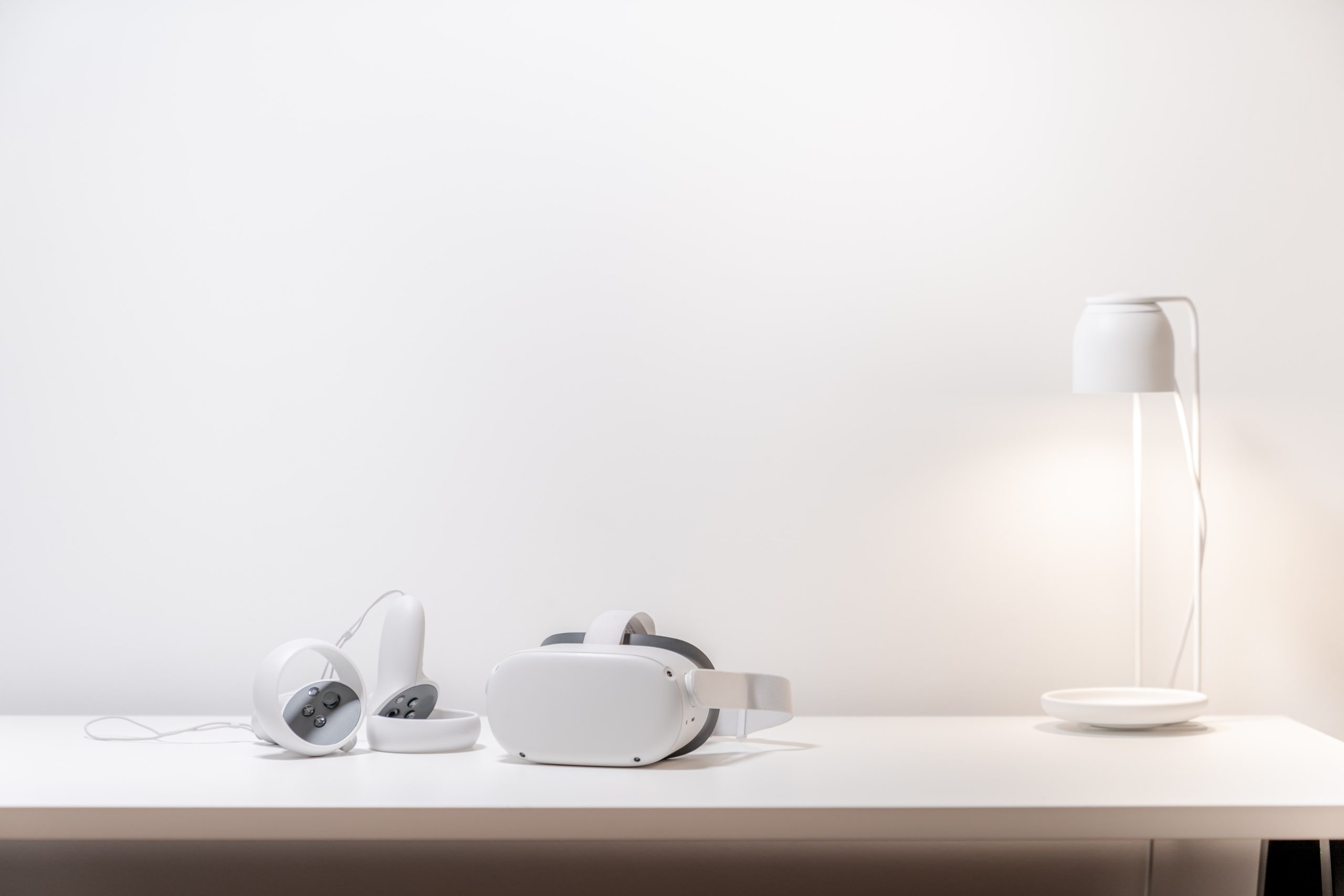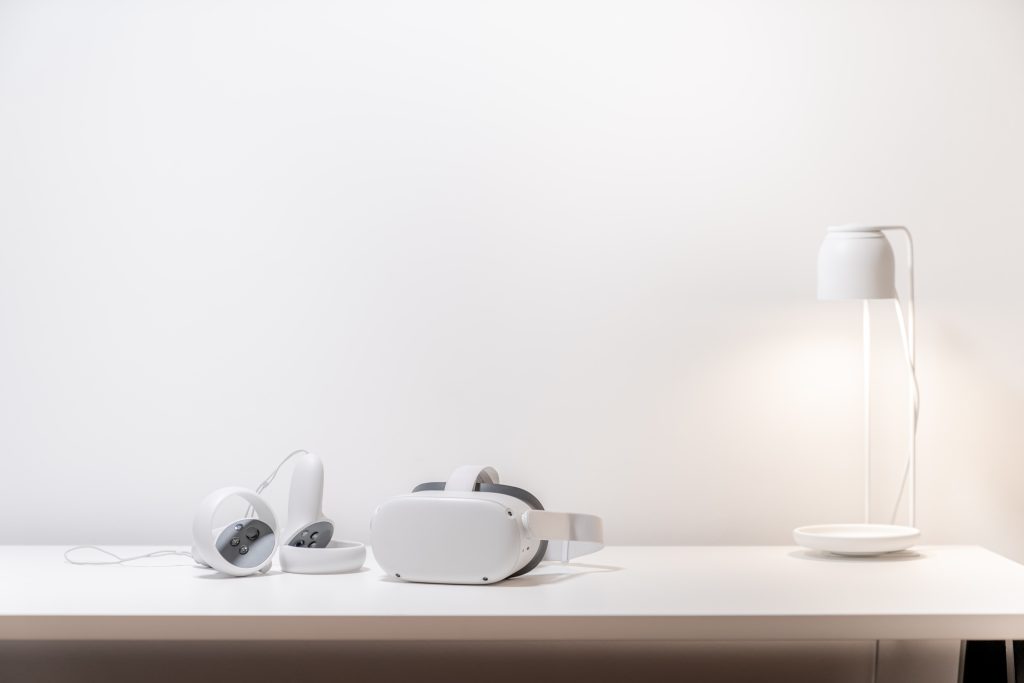Can Any Phone Work In A VR?

Ever wondered if your phone can transport you to a virtual reality world? Well, the answer may surprise you. In this article, I’ll explore the compatibility of various phones with virtual reality headsets and give you the lowdown on whether any phone can truly work in a VR. Get ready to strap on your headset and embark on an immersive journey!
Understanding Virtual Reality
Defining Virtual Reality
Virtual Reality (VR) is a simulated experience that can be similar to or completely different from the real world. It typically involves wearing a headset and using various devices to immerse oneself in a computer-generated environment. VR allows users to interact with this virtual world, providing a sense of presence and engagement.
Uses of Virtual Reality
VR has a wide range of applications in various industries, including gaming, entertainment, education, healthcare, architecture, and engineering. In gaming and entertainment, VR offers an immersive and interactive experience, transporting players to different worlds and enhancing the overall gameplay. In education, VR can provide realistic simulations and virtual environments, enabling students to learn through hands-on experiences. In healthcare, VR is utilized for training simulations, pain management, and therapy. VR is also used in architectural and engineering fields to create virtual models and simulations for design and visualization purposes.
Components of a VR System
A VR system consists of several essential components. The primary component is the headset, which is worn on the head to provide visual and auditory immersion. The headset typically incorporates built-in displays, lenses, and sensors to track head movements and adjust the virtual environment accordingly. Other components may include handheld controllers or gloves that allow for interaction within the virtual world. Additionally, a powerful computer or mobile device is required to generate and render the virtual environment in real-time.
How Does VR Work on Phones?
The Role of Smartphones in VR
Smartphones play a crucial role in making VR accessible to a wider audience. With the advancements in mobile technology, smartphones have become powerful computing devices capable of handling VR applications. They serve as the primary display and processing unit for VR experiences, eliminating the need for expensive dedicated VR headsets or computers. By utilizing the sensors and processing capabilities of smartphones, users can immerse themselves in virtual environments simply by attaching their phones to a VR headset.
The Mechanism of VR in Phones
When using a VR headset with a smartphone, the phone acts as the display and processing unit. The VR headset provides the lenses and the platform to hold the phone securely in place. The phone’s screen is split into two sections, one for each eye, to create a stereoscopic 3D effect. The built-in sensors in the phone track the user’s head movements, allowing for a responsive and interactive experience. The phone’s processor handles the rendering of the virtual environment and the tracking of the user’s movements in real-time, providing an immersive VR experience.
VR Apps for Smartphones
There is a wide range of VR apps available for smartphones, catering to various interests and preferences. These apps can be downloaded from app stores and provide a wide range of virtual experiences, such as virtual tours, gaming, educational simulations, and even social interaction in virtual spaces. Popular VR apps include Google Expeditions, YouTube VR, Oculus Rooms, and Google Earth VR. These apps leverage the capabilities of smartphones to deliver immersive and interactive VR experiences to users.

Phone Specifications for VR
Minimum Specifications Required
For optimal VR performance on smartphones, certain minimum specifications are required. These specifications may vary depending on the specific VR app or game being used but generally include a minimum screen resolution, processor speed, RAM, and GPU performance. Although the exact minimum requirements may vary, a smartphone with a Full HD (1080p) display, a quad-core processor, at least 4GB of RAM, and a dedicated GPU should be capable of providing a satisfactory VR experience.
Ideal Phone Features for VR
While minimum specifications are essential, certain phone features can enhance the VR experience even further. A high-resolution display, such as a Quad HD (1440p) or higher, can provide a more immersive and detailed visual experience. A faster processor, multi-core CPUs, and a powerful GPU can ensure smooth and responsive VR performance. Additionally, a higher amount of RAM can allow for better multitasking and smoother app performance when running resource-intensive VR applications.
Effect of Screen Resolution and Processor Speed on VR Performance
The screen resolution and processor speed of a smartphone play a significant role in determining the VR performance. A higher screen resolution translates to a sharper and more detailed virtual environment. A faster processor, particularly with multiple cores, ensures smooth rendering of the virtual world and responsive tracking of head movements. Insufficient screen resolution or a slower processor can result in a less immersive and laggy VR experience, detracting from the overall quality and enjoyment of the virtual environment.
Commonly Used Phones in VR
Android Phones Compatible with VR
A wide range of Android phones is compatible with VR applications and headsets. Some popular options include Samsung Galaxy S series, Google Pixel series, OnePlus smartphones, and devices from manufacturers like HTC and LG. These phones often boast powerful specifications and dedicated VR app support, making them ideal choices for VR enthusiasts.
iOS Phones Compatible with VR
While Android phones dominate the VR market, there are also options for iOS users. iPhones, such as the iPhone X, XR, XS, and newer models, are compatible with various VR apps and headsets. However, it is worth noting that the availability of VR apps may be more limited compared to the Android platform. Nonetheless, iOS users can still enjoy a range of VR experiences and games on their iPhones.
Challenges of Using Non-Compatible Phones
Using a non-compatible phone with VR applications can be challenging, as it may lead to compatibility issues, limited performance, or even the inability to use certain VR features. Non-compatible phones may lack the necessary sensors or processing power to provide a smooth and immersive VR experience. It is essential to ensure that the phone being used meets the compatibility requirements specified by the VR app or game to avoid disappointment or frustration.

VR Headsets for Phones
Types of VR Headsets for Phones
There are several types of VR headsets available for use with smartphones. The most common type is the mobile VR headset, often referred to as a “cardboard” headset. These headsets are affordable and utilize the phone’s display and processing power to create a VR experience. Another type is the smartphone-powered tethered VR headset, which provides a more immersive experience by connecting the phone to the headset via a cable. Lastly, standalone VR headsets are also available, which have their built-in screens and processors, eliminating the need for a smartphone.
Choosing a VR Headset for Your Phone
When choosing a VR headset for your phone, it is crucial to consider factors such as comfort, compatibility, and the type of VR experience you desire. Mobile VR headsets, such as Google Cardboard or Samsung Gear VR, offer an affordable entry point into VR and are compatible with a wide range of phones. Tethered headsets, like the Oculus Rift or HTC Vive, provide a more immersive experience but require a compatible PC or gaming console. Standalone headsets, such as the Oculus Quest, offer a wireless and self-contained VR experience but might have limited app compatibility and performance compared to tethered headsets.
Using Cardboard VR Headsets
Cardboard VR headsets are a popular option due to their accessibility and affordability. These headsets are made of cardboard or similar materials and are usually lightweight and portable. They work by inserting a compatible smartphone into the headset and using the phone’s display and sensors to create a VR experience. Cardboard headsets often come with compatible apps and games, allowing users to start their VR journey without breaking the bank. While they may not offer the same level of immersion as high-end headsets, they still provide an enjoyable and accessible entry point into the world of VR.
VR Apps and Games for Phones
Popular VR Apps
There is a vast selection of VR apps and games available for smartphones, catering to diverse interests and preferences. Popular VR apps include Google Expeditions, which provides virtual tours and educational experiences, YouTube VR, which allows for immersive 360-degree videos, and Google Earth VR, which enables users to explore the world in a virtual environment. In terms of games, VR titles such as Beat Saber, Superhot VR, and Robo Recall offer engaging and interactive experiences that take full advantage of the immersive capabilities of VR.
How to Install and Use VR Apps
Installing and using VR apps on smartphones is relatively straightforward. Users can download VR apps from their respective app stores, ensuring compatibility with their phone’s operating system. Once installed, users can open the app and follow any setup instructions provided. Some apps may require additional permissions, such as access to the phone’s camera or storage, to function correctly. Once the app is set up, users can typically navigate and interact with the virtual environment using gestures, controllers, or head movements, depending on the app’s design.
VR Games and Interactive Experiences
VR games and interactive experiences offer a whole new level of immersion and engagement. From action-packed adventures to puzzle-solving challenges, VR games transport players into virtual worlds where they can physically interact with the environment and characters. Whether it’s wielding virtual weapons in first-person shooters or exploring fantastical landscapes, VR games provide an unprecedented level of realism and presence. Additionally, there are interactive experiences that focus on exploration, storytelling, and relaxation, offering a diverse range of VR content to suit different preferences and interests.

Limitations and Challenges of Using Phones in VR
Performance Constraints
Despite the advancements in mobile technology, using phones for VR does come with certain limitations. The processing power and graphics capabilities of smartphones, although impressive, may not match those of high-end gaming PCs or dedicated VR systems. As a result, complex and visually demanding VR applications may not run as smoothly or provide the same level of graphical fidelity as on more powerful platforms. Additionally, multitasking capabilities may be restricted, as the phone’s resources are primarily dedicated to running the VR application.
Battery Life and Overheating Issues
VR applications can be resource-intensive and demanding on a phone’s battery. Extended use of VR can quickly drain the phone’s battery, cutting short the VR experience. Furthermore, the intensive processing required for VR applications can generate a significant amount of heat, potentially leading to overheating issues. Phones may employ various mechanisms to mitigate overheating, such as thermal throttling or automatic shutdown, which can interfere with the VR experience or even interrupt it altogether.
Technical Glitches and Software Compatibility
Using phones for VR may also come with technical glitches and software compatibility issues. Due to the wide range of phone models and manufacturers, certain VR apps or games may not be fully optimized or compatible with specific devices. This can lead to performance issues, crashes, or even incompatibility with certain features of the app. Additionally, software updates and compatibility requirements may change over time, potentially rendering some apps or games incompatible with older phones or operating systems.
Safety Considerations While Using VR on Phones
Tips for Safe Use of VR
While using VR on phones is generally safe, it is essential to consider a few safety tips to ensure a comfortable and enjoyable experience. Firstly, it is recommended to take regular breaks when using VR to prevent eye strain, nausea, or fatigue. Additionally, ensuring a clear and safe physical environment is crucial, as VR can be disorienting and may result in collisions or accidents if not cautious. It is also advisable to adjust the headset’s straps and fit properly to ensure a secure and comfortable fit, reducing the risk of discomfort or injuries during VR sessions.
Potential Health Risks
Extended use of VR, regardless of the platform, can potentially pose certain health risks. Prolonged exposure to a virtual environment may cause motion sickness, as the brain struggles to reconcile the conflicting sensory inputs from the virtual world and the physical surroundings. Additionally, certain individuals may be more susceptible to eyestrain or headaches due to the immersion and focus required for VR experiences. It is essential to be aware of these potential risks and take appropriate breaks and precautions to alleviate discomfort or prevent adverse health effects.
Preventing Motion Sickness and Eye Strain
Motion sickness and eye strain can be minimized by considering a few precautionary measures. Taking regular breaks can help alleviate symptoms of motion sickness and prevent prolonged exposure. If experiencing discomfort, focusing on a stationary point or reducing the field of view within the VR settings may help reduce the effects of motion sickness. Adjusting the headset’s position and ensuring proper alignment with the eyes can also minimize eye strain. It is worth noting that individuals may have different tolerances and sensitivities, so finding the right balance of comfort and enjoyment is key.

The Future of VR and Smartphones
Predicted Developments in Mobile VR
The future of VR on smartphones holds exciting potential. As smartphones continue to become more powerful and compact, we can expect advancements in mobile VR technology. Improvements in processing power, graphics capabilities, and sensor technology will likely result in more immersive and realistic VR experiences on smartphones. Additionally, advancements in battery technology and thermal management can help mitigate performance constraints and overheating issues, allowing for longer and more enjoyable VR sessions. Furthermore, the integration of other emerging technologies, such as AR (Augmented Reality) and 5G connectivity, may further enhance the capabilities and versatility of mobile VR.
How 5G Technology will Impact VR
The rollout of 5G technology is expected to have a significant impact on VR experiences. The high-speed and low-latency nature of 5G networks can provide faster and more stable connections, enabling real-time streaming and multiplayer VR experiences on smartphones. 5G can also facilitate the seamless integration of cloud-based VR content and services, reducing the reliance on device storage and processing power. Furthermore, 5G’s capacity to support a massive number of connected devices can enable collaborative VR experiences and social interactions in virtual environments, revolutionizing the way we interact and communicate within VR.
VR and Augmented Reality
While VR focuses on immersing users in entirely virtual environments, Augmented Reality (AR) blends the virtual world with the real world. AR overlays computer-generated content onto the user’s view of the physical environment, creating a mixed reality experience. As smartphones continue to evolve, the integration of VR and AR capabilities is becoming more prevalent. This convergence allows for a seamless transition between fully immersive VR experiences and the integration of virtual content into the user’s physical surroundings. The combination of VR and AR opens new possibilities for interactive applications, gaming, and practical solutions in various industries.
Conclusion: Can Any Phone Work in VR?
Summarizing Phone VR Compatibility
Not every phone is suitable for VR due to various factors such as processing power, screen resolution, and sensor capabilities. However, a significant number of smartphones available today can provide a satisfactory VR experience when paired with a compatible VR headset and app. Android phones, particularly high-end models from Samsung, Google, and other manufacturers, offer a wide range of VR-compatible options. iOS phones, such as iPhones from recent generations, also provide VR capabilities, albeit with some limitations in terms of app availability. Ensuring that the phone meets the minimum specifications and compatibility requirements specified by the VR app or game is crucial to a smooth and enjoyable VR experience.
The Impact of Advances in Technology on VR
Advances in mobile technology, such as increased processing power, higher-resolution displays, and more efficient thermal management, have significantly improved the VR experience on smartphones. As phones continue to evolve, the performance and capabilities of VR on these devices will continue to improve. Additionally, the integration of emerging technologies, such as 5G connectivity and AR, will unlock new possibilities and further enhance the immersive and interactive nature of VR experiences. The future looks promising for VR on smartphones, with continued advancements poised to redefine how we engage with virtual worlds.
Final Thoughts on Phone Compatibility and VR
While not every phone can work in VR, a growing number of smartphones offer the necessary specifications and capabilities to provide an enjoyable VR experience. Whether it’s gaming, education, or entertainment, VR on phones opens up new possibilities for immersive and interactive experiences. As technology continues to advance and VR applications become more widespread, we can expect even greater integration of VR into our everyday lives. Whether it’s exploring far-off destinations, learning through virtual simulations, or diving into the immersive world of gaming, VR on phones gives us a glimpse into what the future holds for this rapidly evolving technology.








